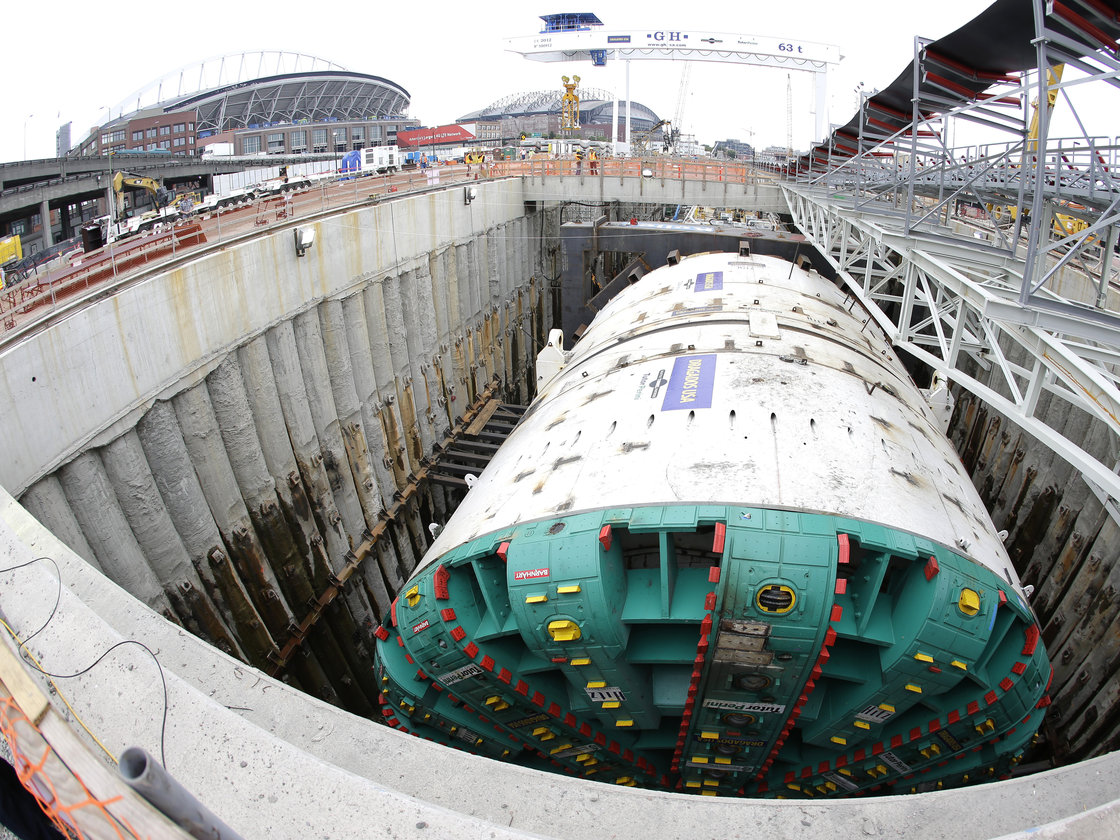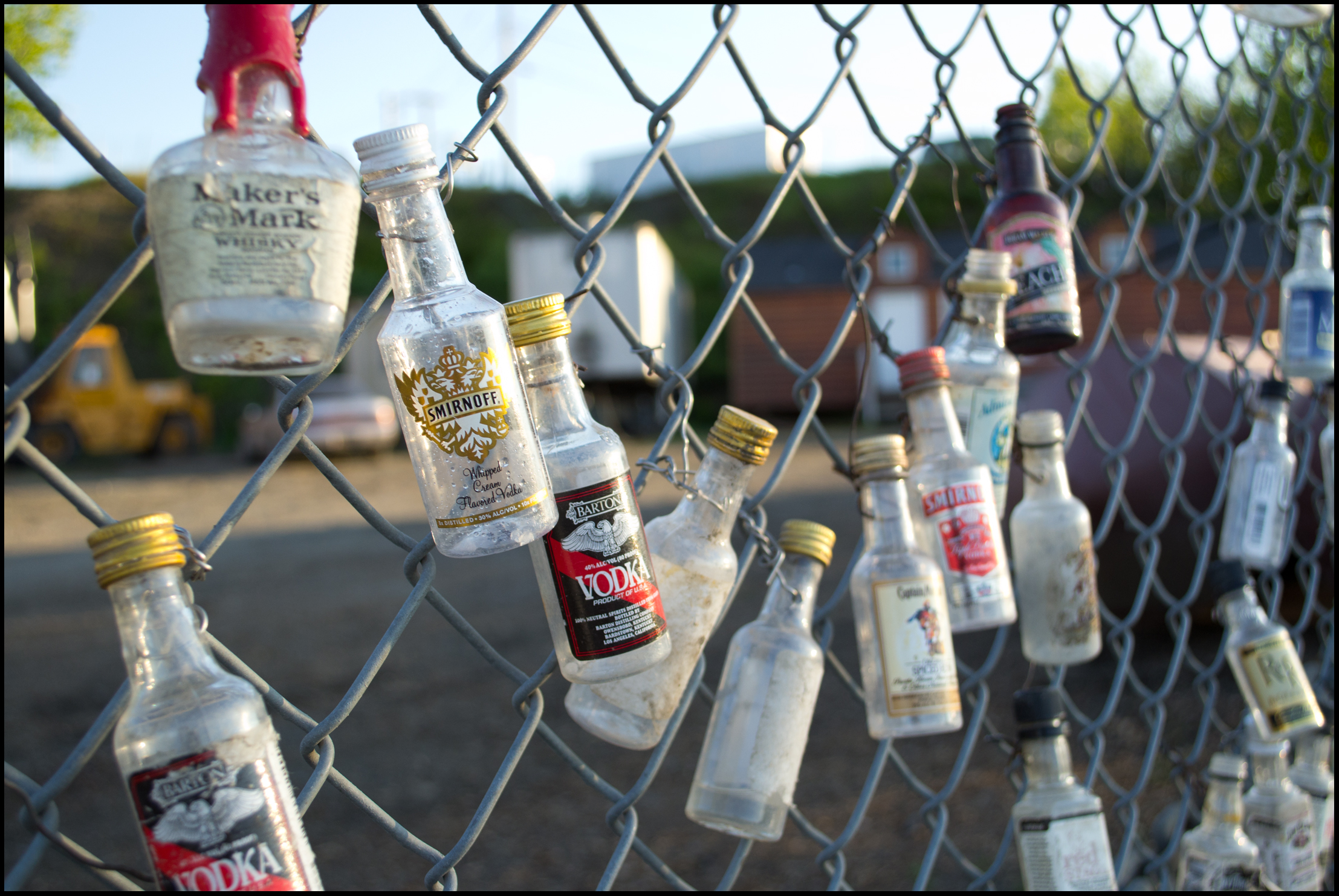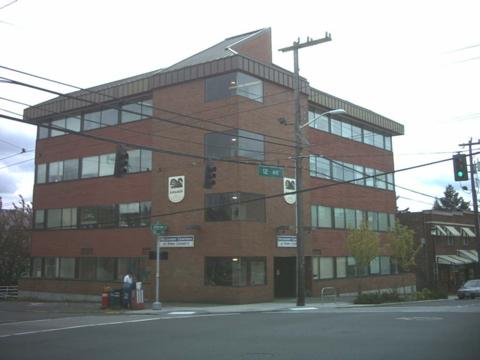With apologies to Robert McNamara, there’s no light at the end of this tunnel.
This afternoon, on the 23rd floor of the Wells Fargo Center, Seattle Tunnel Partners’ project manager Chris Dixon told a phalanx of reporters that it was the long steel pipe that may have set off a series of calamities, leaving Bertha largely idle for more than two months. The collision with the pipe, he said, may have culminated in damaging seals which lubricate the enormous drive bearing.
The 8-inch diameter pipe, planted underground by WSDOT in 2002, broke some cutting tools on the tunneling machine’s massive cutter head, Dixon said. But WSDOT maintains the contractor was aware of the location of the pipes and so the state should not have to foot the bill for the delay or the costly repairs yet to be made. STP isn’t so sure about that.
When the cutting tools were damaged, soil and other debris may have rushed in and clogged the six-story tall cutter head, creating friction that caused the $80 million machine to overheat, thereby breaking at least five seals that will take months to replace.
“That is only one theory we have,” stressed Dixon, who was joined at the news conference by tunnel-project administrator Todd Trepanier.
The two sides say they are working together to fix Berth, but it became clear at the press conference that the two sides have major disagreements.
WSDOT insists there is no reason to believe taxpayers will be on the hook for any cost overruns, while STP, at least for now, is not taking full responsibility for costs. They say there may be evidence that could take leave them blameless, but that further analysis is needed.
“We believe there is evidence, but again it is something that takes further study and further analysis. If we feel like we have a valid case under the contract that entitles us to compensation, we will present that to WSDOT and make them make their final determination,” an STP spokesman said.
WSDOT disagrees. “Our contract is that they supply this machine, it’s a contractor-owned machine to complete this tunnel. We have an expectation that they would fulfill that contract,” said Trepanier.
As the specter of litigation looms, STP is confronted with the undeniably sad fact that the 330-foot long machine has barely moved since Dec. 7, managing a mere 36 days of active drill duty since her 630-ton cutter head commenced to spin on July 30, 2013.
To date, 1,023 feet of the 9,270-foot waterfront tunnel has been excavated. In winning the contract, STP promised it would complete the 1.7-mile tunnel by late 2015. Can that deadline still be met?
“Yeah, if everything goes hunky-dory,” Dixon replied.
At one point Dixon was asked what would happen if workers determine that the world’s largest tunneling machine can’t be fixed. Will it simply be unearthed and sent back on a cargo ship to Hitachi-Zosen, the Japanese-based drill maker?
After a long pause, STP’s top dog said, “Well, Hitachi-Zosen is looking at the design…We haven’t made any determination on that.”
Dixon did say that it is not unusual to have to replace seals on a tunneling machine, and that this is not the first time a deep bore machine has flamed out so early in its drilling schedule.
“But it’s not like the machine has gotten out of the starting blocks and hasn’t performed,” noted Dixon.
It just hasn’t performed in a hunky-dory fashion.
In other developments, in an appearance on The Dori Monson Show Tuesday, Washington Secretary of Transportation Lynn Peterson conceded that while the state’s role is to oversee the stewardship of taxpayer dollars, they’re not at a point where they’d consider abandoning the project.
“I don’t think we’re at that decision point yet,” said Peterson. “It’s obviously at the top of our list to make sure the contractor and the manufacturer get the fix done, get it done as quickly as possible in a safe environment. We will be pushing for that.
“If we get to that point where they come back and they have different information than what they had anticipated, we will have to have a conversation with the community.”








